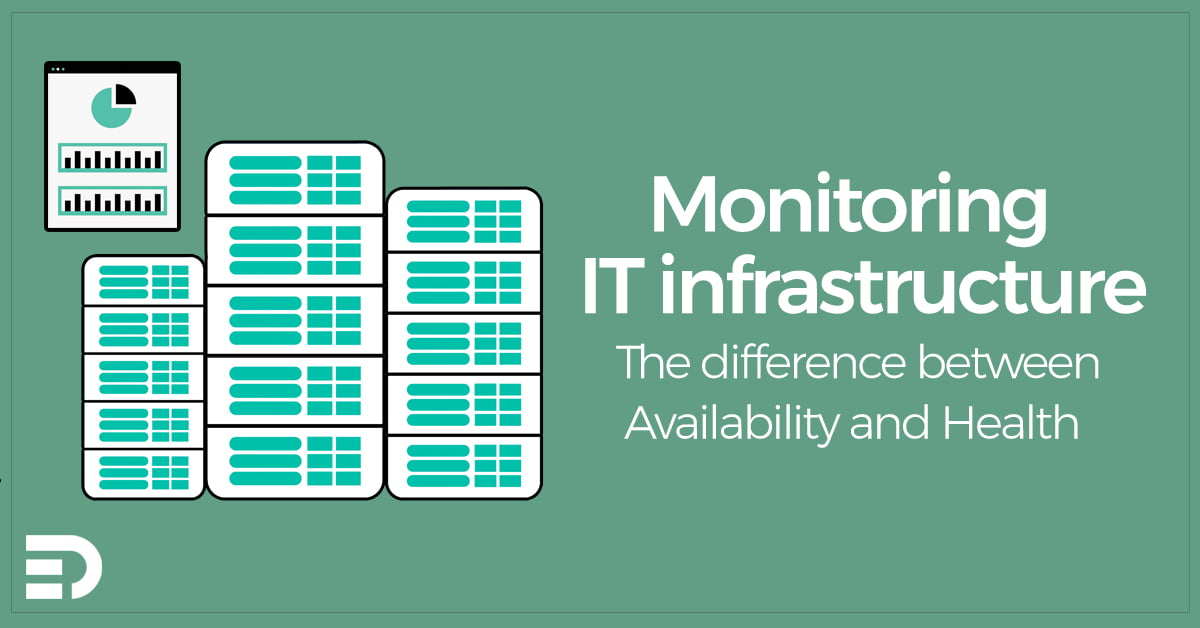Monitoring IT Infrastructure: Understanding the Distinction between Availability and Health
In the fast-paced world of Information Technology, ensuring the seamless performance of your infrastructure is paramount. Two key concepts that play a vital role in this realm are “Availability” and “Health.” Monitoring these aspects effectively is crucial to maintaining optimal operations and minimizing disruptions. In this blog post, we’ll delve into the differences between availability and health monitoring, and why both are essential for a robust IT infrastructure.
Understanding Availability Monitoring
Availability refers to the ability of a system or service to be operational and accessible when needed. In other words, it measures the extent to which your IT infrastructure is “up and running.” Availability monitoring focuses on ensuring that the various components, applications, and services are reachable and operational, allowing users to access them without interruption.
Key Aspects of Availability Monitoring:
- Uptime Percentage: Availability is often measured as a percentage of uptime, indicating how frequently the system is operational. For instance, a 99.9% uptime means that the system is operational for 99.9% of the time within a specific period.
- Response Time: Monitoring the time it takes for a system to respond to requests is crucial. Slow response times can indicate potential bottlenecks or issues affecting user experience.
- Downtime Tracking: Availability monitoring involves tracking and recording instances of downtime. This data helps in identifying trends and patterns that could be addressed to improve system reliability.
- Dashboards: Availability is the only metric you should be displaying on dashboards and TV’s.
Understanding Health Monitoring
Health refers to the overall condition and performance of individual components within your IT infrastructure. Health monitoring involves assessing the status of various hardware and software elements that contribute to the system’s functionality. The objective is to catch early signs of degradation, anomalies, or potential failures that could lead to downtime or performance degradation.
Key Aspects of Health Monitoring:
- Metrics and Metrics Thresholds: Health monitoring involves tracking specific metrics such as CPU usage, memory utilization, disk space, and network traffic. Setting thresholds for these metrics helps identify abnormal behavior and triggers alerts before issues escalate.
- Proactive Maintenance: By monitoring the health of your IT components, you can proactively address potential problems before they impact the system’s overall performance. This might involve replacing failing hardware, optimizing configurations, or applying software patches.
- Predictive Analysis: Health monitoring data can be analyzed to predict potential issues based on historical patterns. This allows IT teams to take preventative measures to avoid future disruptions.
- Predictive Analysis: Health is only for IT staff and people who understand the metrics that make up the health of a system. It should never be displayed on dashboards or in reporting that executives and\or the business see.
The Synergy Between Availability and Health Monitoring
While availability and health monitoring have distinct focuses, they are interrelated and complementary. A system can be available but unhealthy, leading to poor performance and potential issues. Conversely, a healthy system might experience availability issues due to external factors. Therefore, a comprehensive IT monitoring strategy involves both availability and health monitoring to provide a holistic view of your infrastructure’s performance.
Conculsion
In the dynamic landscape of IT, monitoring your infrastructure’s availability and health is essential for providing a seamless experience to users and customers. Availability ensures that your services are accessible, while health monitoring ensures the optimal performance and longevity of your components. By understanding the distinctions between these concepts and implementing a robust monitoring strategy that encompasses both, you can proactively address issues, prevent downtime, and maintain a resilient IT ecosystem. Stay vigilant, keep monitoring, and keep your IT infrastructure in top shape.








Leave A Comment